Sunflowers are one of the most special yellow perennial flowers. For a lot of people, they evoke feelings of fall magic. It’s also one of the most popular ingredients in bird seed mixes. Chickadees, titmice, and goldfinches love munching on delicious and nutritious seeds. The stalks of sunflowers can also work for a variety of things. In the fall, cut the stalks down and use them as decorations. Then roast the seeds and eat them as a healthy snack.
Let’s explore more special yellow perennial flowers. Keep reading to discover the best ones!
1. Green and Gold

Green and gold is a beautiful
perennial flower
that is often grown as an ornamental plant.
©iStock.com/Jennifer Yakey-Ault
One of the most cheerful yellow perennial flowers you’ll ever see is the green and gold. It’s a delightful flower that goes great in any garden, but especially in woodland gardens. Green and gold spread rapidly, and it’s one of the earliest members of the daisy family to bloom in spring. You can identify it by its low, evergreen leaves and daisy-like flowers. It blooms from April to October. This yellow perennial flower prefers partial shade and rich, organic soil. It’s also self-seeding, so it makes a great ground cover. There are loads of reasons to add this plant to your garden!
2. Common Sundrop
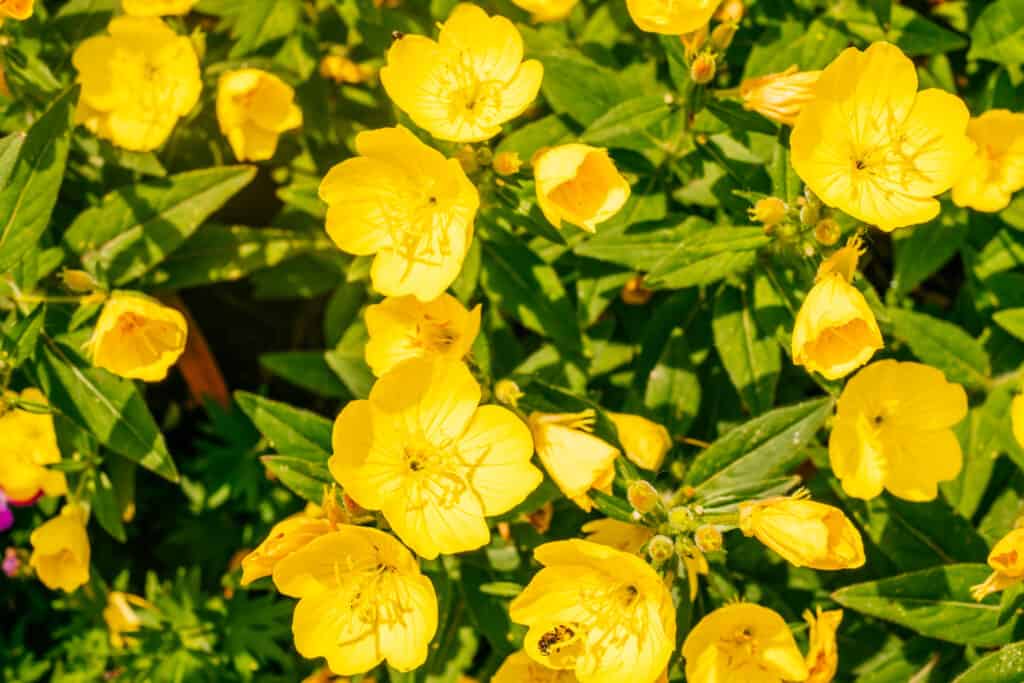
The yellow flowers of Oenothera are also known as evening primrose, suncups, and sundrops.
©iStock.com/Christina Vartanova
The sundrop is one of the most gorgeous yellow perennial flowers that belongs to the genus of evening primroses. The genus divides into two groups based on when the blooms open: one group opens its blooms during the day, and the other opens its blooms in the evening.
The day bloomers are what we know as sundrops, and the common sundrop flower is the most common species. They have smooth, lance-shaped leaves and four lovely yellow petals. Sundrops are native to Canada but can also pop up in fields and meadows in the United States. They typically bloom from June through August and prefer full sun.
The sundrop is the perfect flower for anyone looking for a cheerful addition to their garden that’s easy to take care of. Their vibrant color will definitely brighten up your day!
3. Marsh Marigold
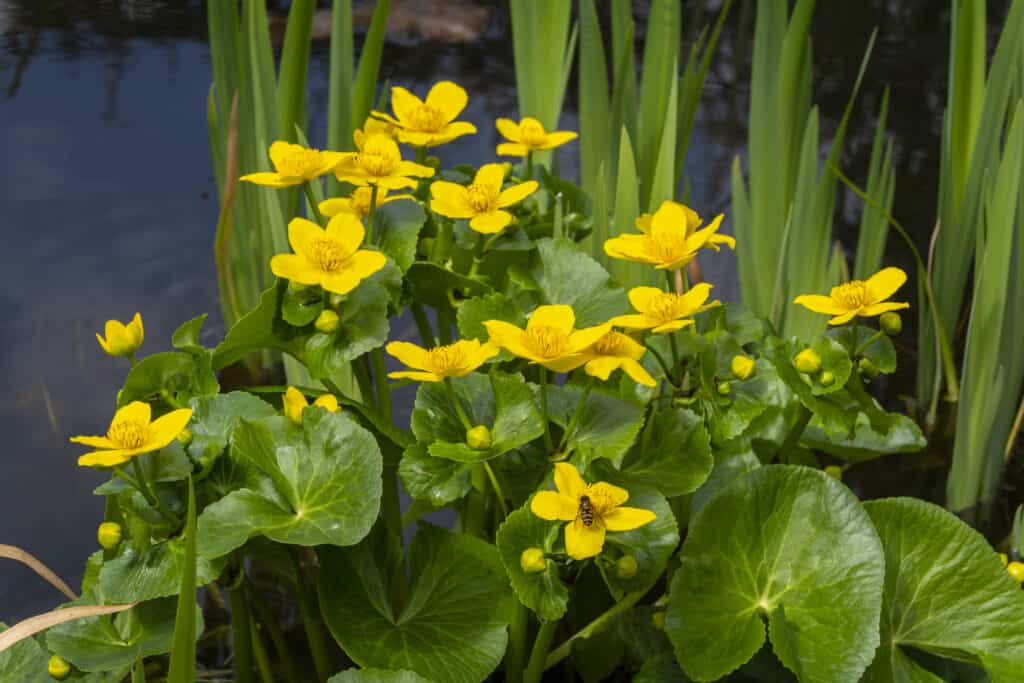
Marsh marigolds are often found in wetlands areas like marshes or along ponds.
©iStock.com/senatorek
The marsh marigold is a truly lovely flower, and its bright yellow blossoms are a welcome sight in springtime. This flower is popular with photographers and gardeners alike, and its glossy, heart-shaped leaves add to its appeal. The marsh marigold is native to swamps and other wet areas, and it typically blooms from April through June.
This plant prefers full sun or partial shade, and it requires rich, organic soil that is high in moisture. After blooming, the leaves of the marsh marigold will die back, and the plant will become dormant. However, it will often self-seed, ensuring that these beautiful flowers will return year after year.
4. Canada Lily
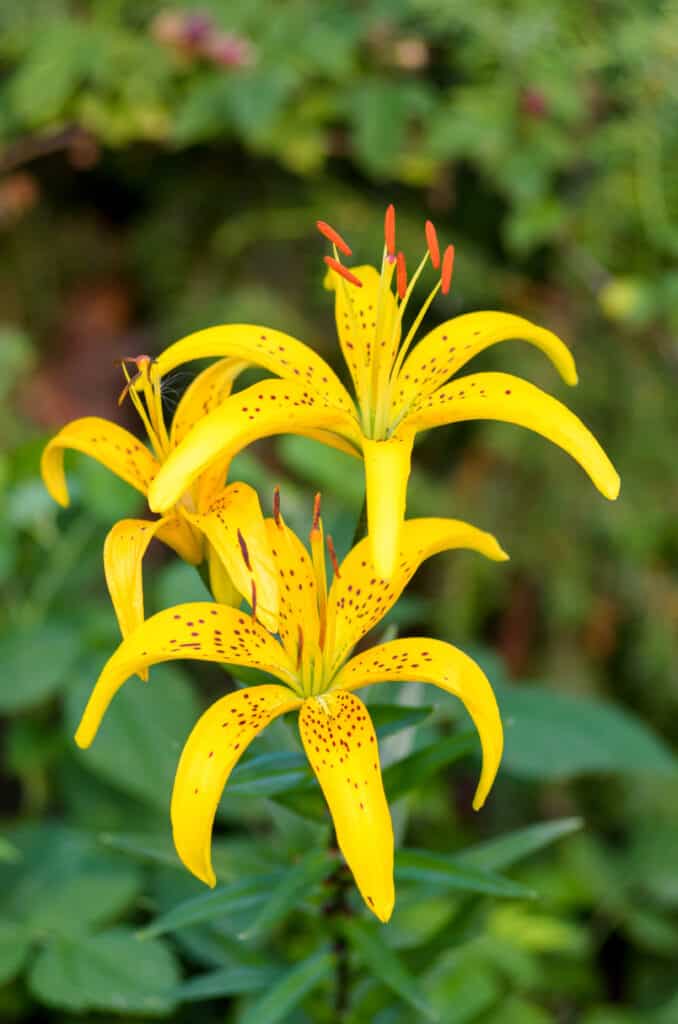
Canada lilies often live in moist meadows.
©iStock.com/Rodion Bondarenko
The Canada lily is a striking, beautiful native plant that is great for gardens. It should go in the back of the garden because it is a tall plant and putting it back will protect its thin stems from wind damage. These lilies are tall yellow perennial flowers with whorls of leaves. You’ll enjoy yellow, red, and orange bell-like flowers that hang downwards, nodding their heads. This lily can have up to 12 flowers, blooming from July through August.
Canada lilies grow 2 to 6 feet tall in full sun or personal shade and need rich organic average moisture soil. You have to purchase plants because growing them from seed is too much of a delicate procedure and can take over 4 years. Ensure the plants you buy undergo propagation at a nursery and are not dug up from the wild. You can also help preserve this species by planting Canada lilies in your own garden!
5. Trout Lily
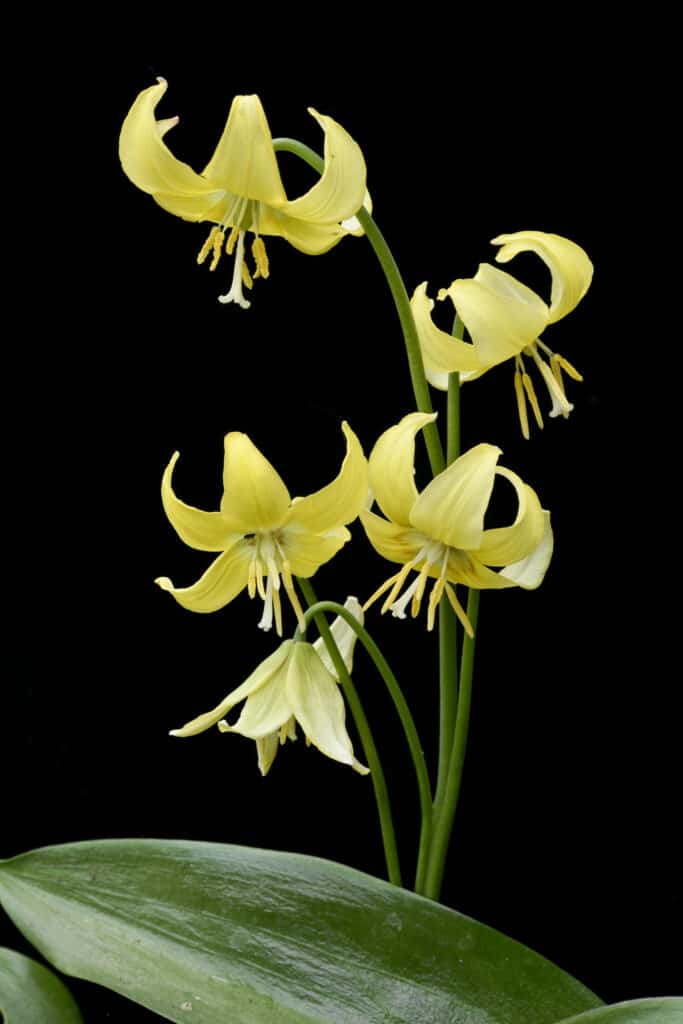
Wild trout lilies live in woodland habitats.
©iStock.com/Michel VIARD
The trout lily is a beautiful and unique plant that is native to North America. It gets its name from its long, pointed leaves, which are brown in color with markings that resemble the underbelly of a trout. These markings help the plant blend in with its surroundings, making it difficult for predators to spot. The trout lily grows riverside and blooms during trout season.
After the flowers have bloomed, the leaves begin to grow. Each plant has one to two thin, long leaves. The flowers are single and stocky, with a lily-like yellow flower. The trout lily can be found in open woods and thickets in Canada. It typically grows to be 6 to 12 inches tall and blooms from March through May.
These yellow perennial flowers prefer shady conditions and high moisture soil. They are best grown near a stream or other body of water. Trout lilies can live for up to 47 years and bloom sporadically. In late summer, the side bulbs can be detached and replanted.
6. Yellow Iris
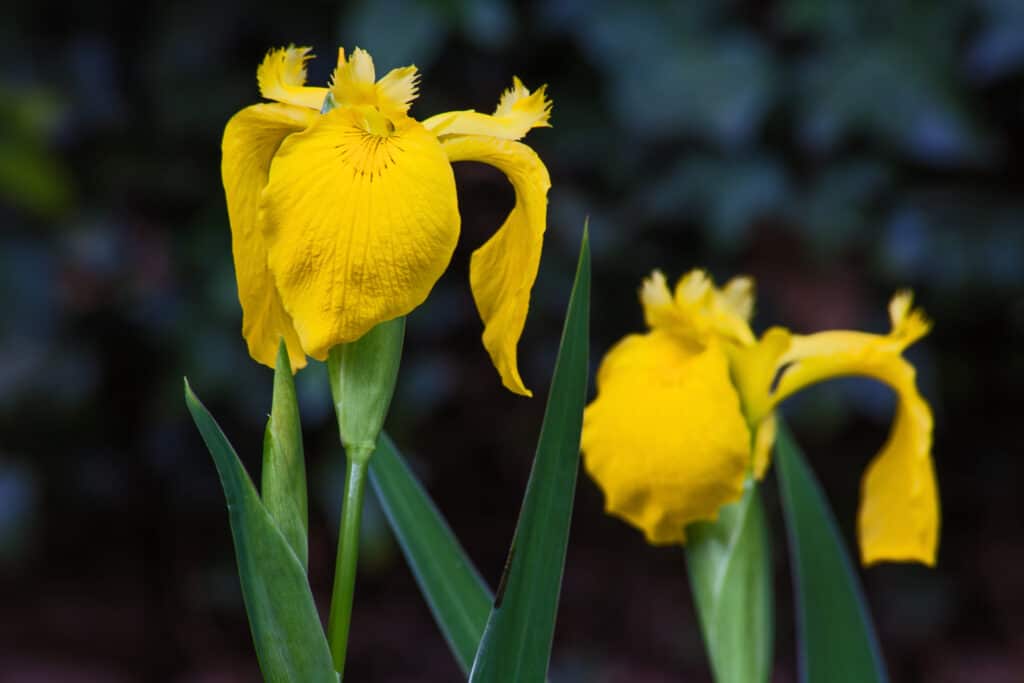
The Yellow Flag Iris (
Iris pseudacorus) is an easy growing plant that grows in shallow water and boggy areas. Unfortunately it is also a very
invasive plant
.
©iStock.com/kobuspeche
The yellow iris is a beautiful flower that has a long and interesting history and symbolism. It was originally imported to North America from Europe, and it has been a symbol of royalty in France for centuries. Today, the yellow iris can be found growing wild in ponds, wetlands, and swamps across the continent.
It is a tall iris that typically reaches two to four inches in height. The yellow blossoms are approximately two inches wide, and they typically bloom from June through July. The yellow iris prefers full sun or partial shade and high moisture levels. It will also grow in rich soil, but it needs to stay wet at all times.
The plant spreads gradually over time, but it doesn’t require any special attention. Some people consider the yellow iris to be an invasive species, but it can be easily confined to a garden if necessary. With its beautiful blooms and intriguing history, the yellow iris is a wonderful addition to any garden.
Up Next:
- Meet The 10 Most Beautiful Yellow Animals in the World
- 12 Beautiful Red Flowers in Texas
- 15 Blue Flowers in Texas
The photo featured at the top of this post is © Sari ONeal/Shutterstock.com
Sources
- Orchid Republic, Available here: https://orchidrepublic.com/blogs/news/types-yellow-flowers-meanings
- Blooming Backyard, Available here: https://www.bloomingbackyard.com/yellow-perennial-flowers/
- Gardening.org, Available here: https://gardening.org/15-bright-yellow-perennials-to-brighten-your-garden/
Thank you for reading! Have some feedback for us? Contact the AZ Animals editorial team.






